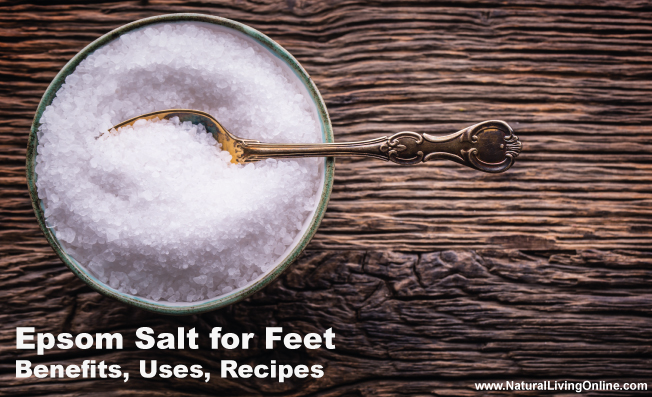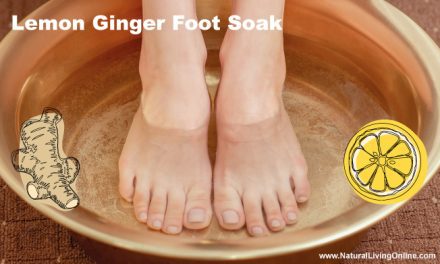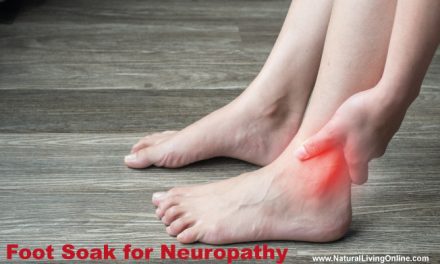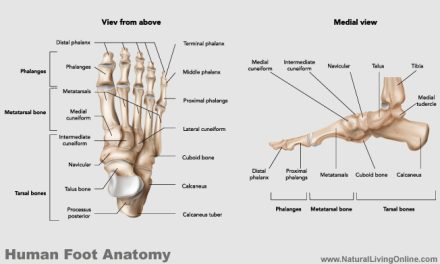As we go about our daily lives, we often forget to take care of our feet, even though they carry the weight of our bodies and endure the stresses of everyday activities. But did you know that Epsom salt can be a game-changer for your foot care routine? In this blog post, we will discuss the benefits of Epsom salt for feet, its various uses, and some recommended recipes for foot problems.
What is Epsom Salt?
Epsom salt, also known as magnesium sulfate, is a naturally occurring compound that contains magnesium, sulfur, and oxygen. It is named after the town of Epsom in Surrey, England, where it was first discovered in the 17th century. Epsom salt has been used for centuries as a natural remedy for various ailments and is especially useful for foot care.
Historical use of Epsom salt foot Soak
The use of Epsom salt for foot care has a long history dating back to the early 17th century. Epsom salt is named after the town of Epsom in Surrey, England, where it was first discovered in the natural springs. The salt is actually a naturally occurring mineral compound called magnesium sulfate, and it was initially used for medicinal purposes.
In the 17th and 18th centuries, Epsom salt was used as a natural laxative and as a treatment for a variety of ailments, including rheumatism, gout, and skin conditions. In the mid-19th century, the therapeutic properties of Epsom salt were rediscovered, and it became a popular ingredient in bath salts and foot soaks.
Epsom salt foot baths became especially popular in the early 20th century, as people began to recognize the benefits of soaking their feet in warm water infused with Epsom salt. During this time, Epsom salt was believed to help improve circulation, relieve muscle pain, and promote relaxation. It was also used to soften the skin and reduce foot odor.
Today, Epsom salt foot soaks and scrubs are still a popular home remedy for foot care. While there is limited scientific research to support the effectiveness of Epsom salt for foot care, many people swear by its therapeutic benefits. Epsom salt is readily available at most drugstores and is an affordable and convenient way to pamper your feet and promote overall wellness.
Importance of Foot Care
Our feet are often neglected in our daily self-care routine, but taking care of them is important for overall health and well-being. Good foot care can help prevent foot problems, such as calluses, corns, blisters, and fungal infections. It can also improve circulation, reduce foot pain and inflammation, and promote relaxation.
Benefits of Epsom Salt baths for Feet

Epsom salt bath has numerous benefits for foot care, including:
- Relieves pain and inflammation: Epsom salt bath can help reduce pain and inflammation in the feet by reducing swelling and promoting relaxation.
- Softens and exfoliates skin: Epsom salt foot soak helps soften and exfoliate the skin on the feet, making it easier to remove dead skin cells and calluses.
- Draws out toxins: Epsom salt foot soak can draw out toxins from the feet, helping to cleanse and detoxify the body.
- Reduces foot odor: Epsom salt foot soak can help reduce foot odor by killing odor-causing bacteria.
- Improves circulation: Epsom salt foot soak can improve circulation in the feet, helping to promote healing and reduce pain and inflammation.
Uses of Epsom Salt foot soak
There are several ways to use Epsom salt baths for foot care:
Soaking feet:
Soaking your feet in an Epsom salt baths can help relieve pain and inflammation, soften and exfoliate skin, and draw out toxins. To prepare a foot soak with Epsom salt, add 1/2 to 1 cup of Epsom salt to a basin of warm water and soak your feet for 20-30 minutes.
Scrubbing feet:
Exfoliating your feet with an Epsom salt scrub can help remove dead skin cells and calluses, leaving your feet soft and smooth. To prepare a foot scrub with Epsom salt, mix 1/4 cup of Epsom salt with 1/4 cup of olive oil or coconut oil and scrub your feet gently in a circular motion.
Foot spray:
Using an Epsom salt foot spray can help fight fungal infections and foot odor, as well as promote relaxation. To prepare a foot spray with Epsom salt, mix 1/4 cup of Epsom salt with 1 cup of warm water and 10-15 drops of your favorite essential oil, and spray on your feet as needed.
Recommended Recipes for Foot Problems
Foot soak for sore and tired feet:
Foot soak involves immersing your feet in Epsom salt soaks for 20-30 minutes. To relieve sore muscles and tired feet, and get a relief from foot pain, add 1/2 cup of Epsom salt and 10-15 drops of peppermint essential oil to a basin or foot spa of warm water and soak your feet for 20-30 minutes. It is widely recommended remedy for foot pain.
Foot bath for swollen feet
Epsom salt, also known as magnesium sulfate, has natural anti-inflammatory properties that can help reduce swelling in the feet. When you soak your feet in warm water infused with Epsom salt, the magnesium is absorbed through the skin, which can help relax muscles, reduce inflammation, and improve blood circulation. It is one of the best home remedy for swollen feet and soothe severe foot pain, muscle aches, and improve foot health.
Foot scrub for calluses and rough skin:
To remove calluses and rough skin, mix 1/4 cup of Epsom salt with 1/4 cup of olive oil and 1 tablespoon of honey, and scrub your feet gently in a circular motion. Rinse with warm water and pat dry.
Foot spray for fungal infections and foot odor:
To fight fungal infections, athlete’s foot and toenail fungus, mix 1/4 cup of Epsom salt with 1 cup of warm water and 10-15 drops of tea tree essential oil, and spray on your feet twice a day. Tea tree oil is an essential oil with antifungal and antibacterial properties that can be added to Epsom foot soaks to provide additional benefits for the feet. It fights foot odor, prevents and treats athlete’s foot, fungal infections, soothes skin irritations, and relieves pain. When added to warm water and Epsom salt, tea tree oil foot soak can help reduce swelling, improve circulation, and promote relaxation, making it an effective and natural remedy for foot care. However, tea tree oil is a potent essential oil and should always be diluted before use, and some people may be allergic to it, so a patch test should be done on a small area of skin before use.
Precautions and Tips for Using Epsom Salt for Feet
While Epsom salt is generally safe for foot care, there are a few precautions and tips to keep in mind:
- Possible side effects: Epsom salt can cause skin irritation or allergic reactions in some people. If you experience any adverse reactions, discontinue use immediately and consult a healthcare professional.
- Consultation with a healthcare professional: If you have diabetes or any other medical condition that affects your feet, consult a healthcare professional before using Epsom salt for foot care.
- Frequency and duration of use: Avoid overdoing foot soaks and do not use Epsom salt foot baths or scrubs more than twice a week or for longer than 30 minutes at a time.
- Tips for better results: To maximize the benefits of Epsom salt for foot care, moisturize your feet after each use and wear comfortable, well-fitting shoes that provide adequate support.
Other Salts for footcare
While Epsom salt is a popular choice for foot care, there are alternative foot soaks with other types of salts that offer unique benefits for your feet. Here are a few other salts to consider:
Dead Sea Salt:
Dead Sea salt is harvested from the Dead Sea in Israel, which is known for its high salt concentration and therapeutic properties. Dead Sea salt contains a high level of magnesium, potassium, and calcium, which can help soothe sore muscles, improve circulation, and reduce inflammation. It is also effective for treating skin conditions like eczema and psoriasis.
To use Dead Sea salt for foot care, add 1/4 cup of Dead Sea salt to warm water and soak your feet for 15-20 minutes.
Himalayan Pink Salt:
Himalayan pink salt, a naturally occurring mineral salt, is a type of rock salt that is mined in the Himalayan mountains of Pakistan. It is rich in minerals like magnesium, potassium, and calcium, and also contains trace minerals like copper, iron, and zinc. Himalayan salt is believed to have detoxifying properties and can help improve circulation, reduce inflammation, and relieve muscle pain.
To use Himalayan salt for foot care, add 1/4 cup of Himalayan salt to warm water and soak your feet for 15-20 minutes.
Celtic Sea Salt:
Celtic sea salt is harvested from the coastal regions of Brittany, France. It is an unrefined salt that contains a variety of minerals, including magnesium, potassium, and calcium. Celtic sea salt is believed to help balance electrolytes, improve circulation, and reduce inflammation.
To use Celtic sea salt for foot care, add 1/4 cup of Celtic sea salt to warm water and soak your feet for 15-20 minutes.
While Epsom foot soak is a popular and effective choice for foot care, other types of salts like Dead Sea salt, Himalayan salt, and Celtic sea salt can offer unique benefits for your feet. Consider trying different types of salts and see which one works best for you.
Conclusion
Epsom salt can be a valuable addition to your foot care routine, providing numerous benefits for foot related complaints like joint pain relief, sore feet, skin exfoliation, skin infections, detoxification, athlete’s foot, smelly feet and circulation. By using the recommended recipes and following the precautions and tips, you can enjoy healthier, happier feet and improve your overall well-being. Take the time to care for your feet, and they will thank you for it!
This website does not provide medical advice.
All information provided on this website, and on associated social media networks, including but not limited to texts, images, and numbers are for general information purpose only. It is not intended as medical advice and it does not include all possible precautions, side effects, or interactions that may occur. Neither NaturalLivingOnline.com nor its author/founder take responsibility for how you use this information. Statements contained on NaturalLivingOnline.com have not been evaluated by the FDA. You should conduct thorough research via multiple sources and consult your physician or qualified doctor before using any essential oil or herbal remedy. Information on NaturalLivingOnline.com must not be relied upon for medical, legal, financial or other decisions.













